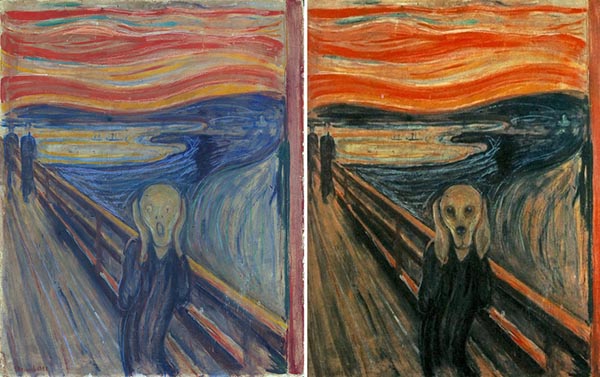Thank God for sports photographers. pic.twitter.com/xKRd55iMbh
— Geoffrey Ingersoll (@GPIngersoll) November 5, 2019
Catnip for Cary
The New York Times had a story this week about Cary Sherburne’s favorite substance, graphene, and how it was first discovered and hyped 15 years ago, then faded from interest as its biggest strength—its, um, strength—was also, ironically, its biggest weakness as it was difficult to cut into different shapes for various applications.
However, like the phoenix of myth, graphene rose from the ashes and at MIT a new way of working with graphene spawned a new field: twistronics. A paper published in the journal Nature looks at how graphene—formerly only thought of as an insulator—can be turned into a superconductor.
Life On Mars
Via Boing Boing, a catalog from rare book firm Type Punch Matrix that features, among many other items, “A first edition of Journeys to the Planet Mars (1904) by Sara Weiss, a Spiritualist who used remote viewing to visit Mars. The book includes original illustrations of Martian flora, and a Martian glossary!”

iSubscribe
Via Business Insider: “On Apple's earnings call Wednesday, CEO Tim Cook hinted at a potential iPhone subscription service in the future, something investors have been talking about for years.” Furthermore, “While Cook did not specify what sort of bundles or subscriptions Apple might offer in the future, he did say that the company is working on an option that makes it easier for people to get on monthly payment plans for iPhones.” This would be in addition to the monthly amount we pay for actual service. So, in other words, more.
CMTMYK
Via Ad Age, T-Mobile claims it has the exclusive rights to the color magenta, at least in Germany.
New York-based Lemonade is a 3-year-old company that lives completely online and mostly focuses on homeowners and renter’s insurance. The company uses a similar color to magenta — it says it's "pink" — in its marketing materials and its website. But Lemonade was told by German courts that it must cease using its color after launching its services in that country, which is also home to T-Mobile owner Deutsche Telekom.
Let’s hope Country Time never tries to sell its pink lemonade in Germany.
What Does It Say About the Bride?
The first ever piece of high-visibility clothing was a wedding dress belonging to the wife of the inventor of Day-Glo paint.
— Quite Interesting (@qikipedia) November 7, 2019
You don’t even want to know about the bridesmaids’ dresses.
The Accidental Museum
As someone we know is fond of saying, “It’s not hoarding if you own a museum.” So that’s kind of how a sewing machine repair shop in Manhattan ended up becoming an ersatz museum of old New York. From the New York Times:
Mr. Hecht, 60, is the third-generation owner of Hecht Sewing Machine and Motor Company, a more-than-century-old sewing-machine repair shop that has also become, as the neighborhood’s garment factories and small businesses have died off, a repository of old New York.
...
Mr. Hecht has a lot of old dress forms in his meticulously crammed storefront on West 38th Street in what is rapidly becoming the former garment district.
He also has nude photos and ticket stubs from Show World, the shuttered Times Square sex emporium, even an old type cutter from the days when The New York Times printed its papers on 43rd Street.
He has an antique lightning rod from a shirt company in Hell’s Kitchen, oil cans found when the old Pennsylvania Station was being dismantled. The bell on the front door once rang in a local boxing ring.
That Way Madness Lies
King Lear: Daughters, each of you must tell me how much you love me, and I will divide my kingdom among you accordingly.
— Ernst Gerhardt (@eeseejee) November 5, 2019
Cordelia: ok boomer
Edifice Wrecks
Eager to visit the brand new, $41.5 million Hunters Point Library in Long Island City? If so, bring your workout gear. The New York Times heralded the library—15 to 20 years in the making—as an architectural triumph, but elsewhere points out that as aesthetically breathtaking as it may be, it is completely impractical as a library, especially for those who have mobility issues, as it appears to have more stairs than books. The edifice offers many terraces and landings, but “several of the terraces...are inaccessible to people who cannot climb to them.” And apparently the children’s section was designed by W.C. Fields: “A staircase and bleacher seating in the children’s section, judged too risky for small children, has been closed off.” (Emphasis added.) “And the five-story, vertically designed building only has one elevator, creating bottlenecks at times.”
About the elevator, adds the Gothamist: “Because although the Hunters Point Library has an elevator, it does not stop at three fiction sections, which are tiered on three separate levels above the lobby.”
Make sure your library card has your emergency contact info on it.

Jake Dobkin / Gothamist
Beating the DRM
As if ebooks weren’t becoming unpopular enough as it is, especially among library users, Macmillan’s new policy regarding library ebook access may further drive readers back to print or, more likely, to audio books. Says Smithsonian magazine: “As of November 1, [Macmillan] only allows library systems to purchase one electronic copy of a book during the first eight weeks following publication. The publisher’s new policy has generated widespread outrage among librarians and book lovers alike.”
As many Library Journal research studies have found, limited access to ebooks has been a thorn in the side of libraries since the advent of ebooks. This is especially acute in academic libraries, where all the students in a class may need access to the same ebook. This new policy may not impact students and college libraries all that much (the policy only involves the first eight weeks following publication), but for public libraries trying to make new releases and bestsellers available, it will cause even more friction between librarians and patrons who don’t understand how there can only be one copy of what is essentially an electronic file.
Assembly Required
The blobby figures they use to illustrate the directions on IKEA products are the same blobs that tried to drag Patrick Swayze to hell in "Ghost". So, be careful when you're putting together that desk, okay?
— R. Eric Thomas (@oureric) October 31, 2019
Food for Thought
What is the oldest recipe known to humans? And what would it taste like? As it happens, a team of international scholars comprising experts in culinary history, food chemistry, and cuneiform studies are decoding some of the oldest extant recipes. Says the BBC, one recipe for lamb stew—which is about 4,000 years old—is a bit on the vague side: “Meat is used. You prepare water. You add fine-grained salt, dried barley cakes, onion, Persian shallot, and milk. You crush and add leek and garlic.” Bam!
In all, the team has been trying to reconstruct some 35–40 ancient Babylonian and Assyrian recipes, mostly stews and broths. While the recipes may lack specific steps, the good news is that the process of cooking has not really changed all that much in 4,000 years; a piece of meat will behave in the presence of heat about the same way today.
Still “culinary archaeology” is pretty fascinating.
The four dishes culled from the list-style tablet also each have unique uses. Pashrutum, for example, is a soup one might serve someone suffering from a cold, Lassen said, though the meaning of this bland broth accented by leek, coriander and onion flavours translates as “unwinding”. Elamite broth (“mu elamutum”), on the other hand, is among two foreign (or “Zukanda”) dishes listed in the tablets, Barjamovic said.
Hell-Fried Chicken
Come for the Satanic Exorcism, stay for the all you can eat fried chicken. pic.twitter.com/wIpPvvUWBz
— Sardonicus (@RealSardonicus) November 5, 2019
Eyesight to the Blind Spots
On those occasions when drivers look up from their phones to actually look around them, they may be thwarted by their cars’ inevitable blind spots—the opaque bits of car that separate the windshield from the passenger window. Now, a brilliant 14-year-old has seemingly solved the problem. From Gizmodo:
Using some relatively inexpensive and readily available technology you can find at any well-stocked electronics store, Alaina Gassler, a 14-year-old inventorfrom West Grove, Pennsylvania, came up with a clever way to eliminate the blind spot created by the thick pillars on the side of a car’s windshield.
The Howl?
From the “Once You’ve Seen It, You Can’t Unsee It” Department, the (admittedly facetious) theory, via Core77, that Edvard Munch’s famous “The Scream” was actually his attempt to paint his dog.

Mona and Groaning
In other art news, the New York Times insists that it’s time to “take down the Mona Lisa.” That doesn’t mean that someone should write a hit piece on La Gioconda, although that’s kind of what this article is. “[T]he Louvre is being held hostage by the Kim Kardashian of 16th-century Italian portraiture: the handsome but only moderately interesting Lisa Gherardini, better known (after her husband) as La Gioconda, whose renown so eclipses her importance that no one can even remember how she got famous in the first place.” Meow.
So, what is le boeuf? “[Y]ou must line up in a hideous, T.S.A.-style snake of retractable barriers that ends about 12 feet from the Leonardo — which, for a painting that’s just two and a half feet tall, is too far for looking and way too far for a good selfie.”
OK, we were with them until the bit about the selfie.
Rebel Without a Pulse
This has to be among the worst ideas ever to come out of Hollywood (which is saying something):
James Dean, who died in 1955, will return to the screen via CGI using actual footage and photos. Details: https://t.co/Xzd4Uq0vLu
— Hollywood Reporter (@THR) November 6, 2019
They couldn’t find a living actor for this role? It’s kind of reminiscent when they CGIed Orville “Deadenbacher” into popcorn commercials.
Limited Stock in Trade
Bloomberg has a discursive but interesting piece on the latest stock market rally, and identifies one factor driving the market ever-higher: “I think people lose sight of one key factor that drives the equities market: supply and demand. The number of publicly traded companies has dropped by about half in 20 years, from about 7,000 to about 3,500. This means there is more money chasing fewer shares. The boom in stock buybacks has likely reduced outstanding shares even more.”
No More Net
Popular Mechanics asks, “What Would Happen If the Internet Went Down ... Forever?” They make no mention of the fact that you would not be able to get your daily WhatTheyThink newsletter (although the print edition would still arrive in your mailbox), but there are many other bad things that would happen, like civilization coming to a grinding, screeching halt (which we assume would be a bad thing). Whilst it might seem like the loss of Facebook and Twitter would actually be a net gain for humanity, it’s the loss of everything else that would disrupt...everything else.
The number one application of the internet is still email, and, given that it’s such a crucial piece of how we conduct business around the globe, we can expect a screeching halt in productivity on a grand scale. The major cell phone carriers use the internet for call routing and communications, so forget trying to phone your family or your friends. The credit cards in your wallet? Useless.
It would probably lead to something like a natural disaster—in this case, an unnatural disaster.
In the event of a world without internet, the inclination to panic or prepare might be fairly strong. It’s no zombie apocalypse or repeat of the 1918 flu pandemic, but a massive internet shutdown would probably rock neighborhoods, towns, and cities much in the same way hurricanes, earthquakes, or tornados do.
Bye
Ya know, life is just too damn short to tell you why I unsubscribed from your mailing list.
— Mary Jo Pehl (@MaryJoPehl) November 6, 2019
This Week in Printing, Publishing, and Media History
November 4
1922: British archaeologist Howard Carter and his men find the entrance to Tutankhamun’s tomb in the Valley of the Kings.
November 5
1499: Publication of the Catholicon, written in 1464 by Jehan Lagadeuc in Tréguier, the first Breton dictionary and the first French dictionary.
1857: American journalist, author, reformer, and educator Ida Tarbell born.
1885: American historian and philosopher Will Durant (The Story of Civilization) born.
1959: Canadian singer-songwriter and guitarist Bryan Adams and, 1974, American singer-songwriter and guitarist Ryan Adams born. The coincidence cuts like a knife.
2007: The Android mobile operating system is unveiled by Google.
November 6
1814: Belgian-French instrument designer and inventor of the saxophone Adolphe Sax born.
1869: In New Brunswick, New Jersey, Rutgers College defeats Princeton University (then known as the College of New Jersey), 6–4, in the first official intercollegiate American football game.
1935: Edwin Armstrong presents his paper “A Method of Reducing Disturbances in Radio Signaling by a System of Frequency Modulation” to the New York section of the Institute of Radio Engineers—basically inventing FM radio.
1947: Meet the Press, the longest running television program in history, debuts.
1958: American actor, puppeteer, producer, comic, and screenwriter Trace Beaulieu (Mystery Science Theater 3000) born.
November 7
1665: The London Gazette, the oldest surviving journal, is first published.
1837: In Alton, Ill., abolitionist printer Elijah P. Lovejoy is shot dead by a mob while attempting to protect his printing shop from being destroyed a third time.
1874: A cartoon by Thomas Nast in Harper’s Weekly is considered the first important use of an elephant as a symbol for the United States Republican Party.
1897: American director, producer, and screenwriter Herman J. Mankiewicz (Citizen Kane) born.
1913: French novelist, philosopher, journalist, and Nobel Prize laureate Albert Camus born.
1914: The first issue of The New Republic is published.
1929: The Museum of Modern Art opens to the public in New York City.
1943: Canadian singer-songwriter and guitarist Joni Mitchell born.
1967: U.S. President Lyndon B. Johnson signs the Public Broadcasting Act of 1967, establishing the Corporation for Public Broadcasting.
1994: WXYC, the student radio station of the University of North Carolina at Chapel Hill, provides the world’s first internet radio broadcast.
November 8
1602: The Bodleian Library at the University of Oxford is opened to the public.
1847: Irish novelist Bram Stoker (Dracula) became undead born.
1898: Canadian-American actress and singer Marie Prevost born. Despite the story in Kenneth Anger’s Hollywood Babylon (and a song by Nick Lowe) Prevost was not ultimately eaten by her dog.
1918: German typographer and calligrapher Hermann Zapf born.
1972: HBO launches its programming, with the broadcast of the 1971 movie Sometimes a Great Notion, starring Paul Newman and Henry Fonda.
1973: The right ear of John Paul Getty III is delivered to a newspaper together with a ransom note, convincing his father to pay US$2.9 million
November 9
1818: Russian author and playwright Ivan Turgenev born.
1914: Austrian-American actress and inventor Hedy Lamarr (not Hedley) born. During World War II, Lamarr and composer George Antheil developed a radio guidance system for Allied torpedoes, unused at the time, but the principles of which were incorporated into Bluetooth technology and are similar to methods used in legacy versions of CDMA and Wi-Fi.
1934: American astronomer, astrophysicist, and author Carl Sagan born.
1967: The first issue of Rolling Stone magazine is published.
November 10
1947: English singer-songwriter, guitarist, and producer Greg Lake born.
1969: National Educational Television (the predecessor to the Public Broadcasting Service) in the United States debuts Sesame Street.
1983: Microsoft introduces Windows 1.0.










Discussion
Join the discussion Sign In or Become a Member, doing so is simple and free